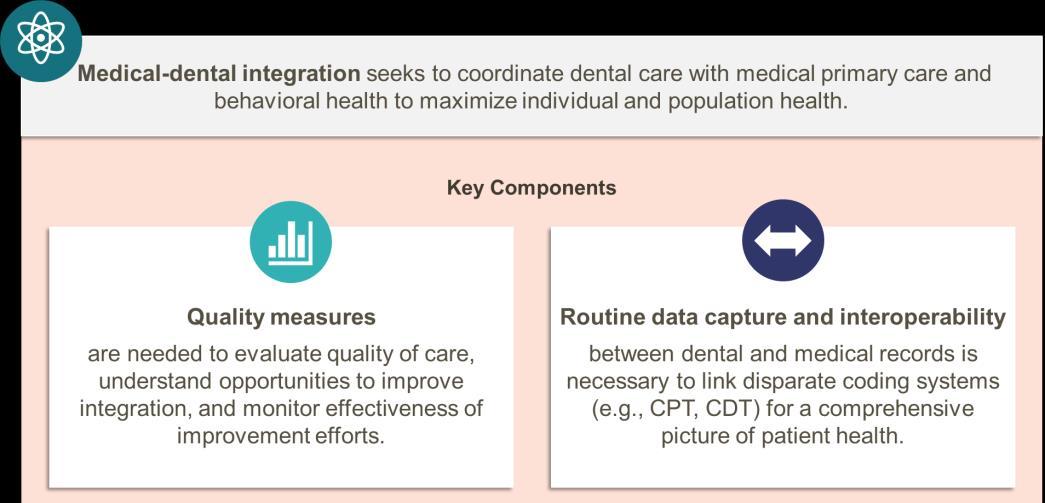
2 minute read
Key Components of Value-Based Oral Healthcare
Much of the activity in the oral health quality environment is conducted by stakeholders such as dental specialty societies, quality coalitions, and individual health care organizations. Notable initiatives include programs focused on access to dental care, the development of dental health quality measures, and state oral health coalitions and collaboratives. Organizations such as the Health Right and Administration for Community Living (ACL) have developed initiatives to improve access to dental care for under-served populations. The Dental Quality Alliance (DQA), established by the American Dental Association (ADA), is the key developer of oral health care measures in the US11 and has developed six adult-specific quality measures. Lastly, state coalitions and collaboratives support reaching state population oral health objectives and are dedicated to improving oral health preventive care and outcomes throughout states through leadership, advocacy, and quality improvement activities.12 Currently, twenty-nine states have a state health coalition or collaborative related to adult oral health, such as the North Carolina (NC) Oral Health Collaborative and New Hampshire Oral Health Coalition (NHOHC). 12
Three components emerged as necessary for advancing VBOHC: Medical-dental integration, quality measures, and routine data capture and interoperability between medical and dental records (Figure 2).
FIGURE 2. COMPONENTS NECESSARY FOR VBOHC
Medical-dental integration is an approach to care that integrates and coordinates oral health with primary care and behavioral health. Because of the interdependency between oral and overall health, medical-dental integration is one of the most impactful ways to support individual and population health. Examples of integration tactics include interprofessional education, interprofessional collaborative practice, closed-loop referral processes, and public and private partnerships.13 Although momentum to integrate medical and oral health has been building for the last few decades, there is still room for improvement. In the Report on Oral Health published in 2000, the US Surgeon General called for increased involvement of all healthcare providers in enhancing oral health.14 While this call for medical-dental integration has been reaffirmed since, major barriers persist and hinder the realization of medical-dental integration throughout the US. As the primary care system shifts toward more patient-centered, value-focused, and coordinated care, there is an opportunity to advance medical-dental integration and transform oral health delivery.15 Quality measures are necessary to promote effective medical-dental integration since they can evaluate quality of dental care and the impact of integration efforts. Although oral health measures for children are currently used in major US quality programs (e.g., National Committee for Quality Assurance Healthcare Effectiveness Data and


